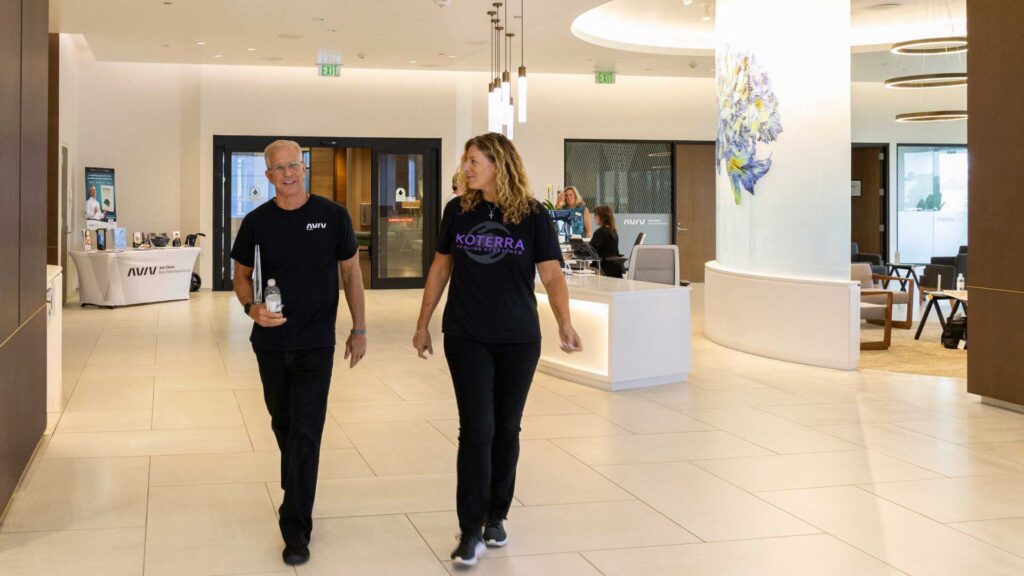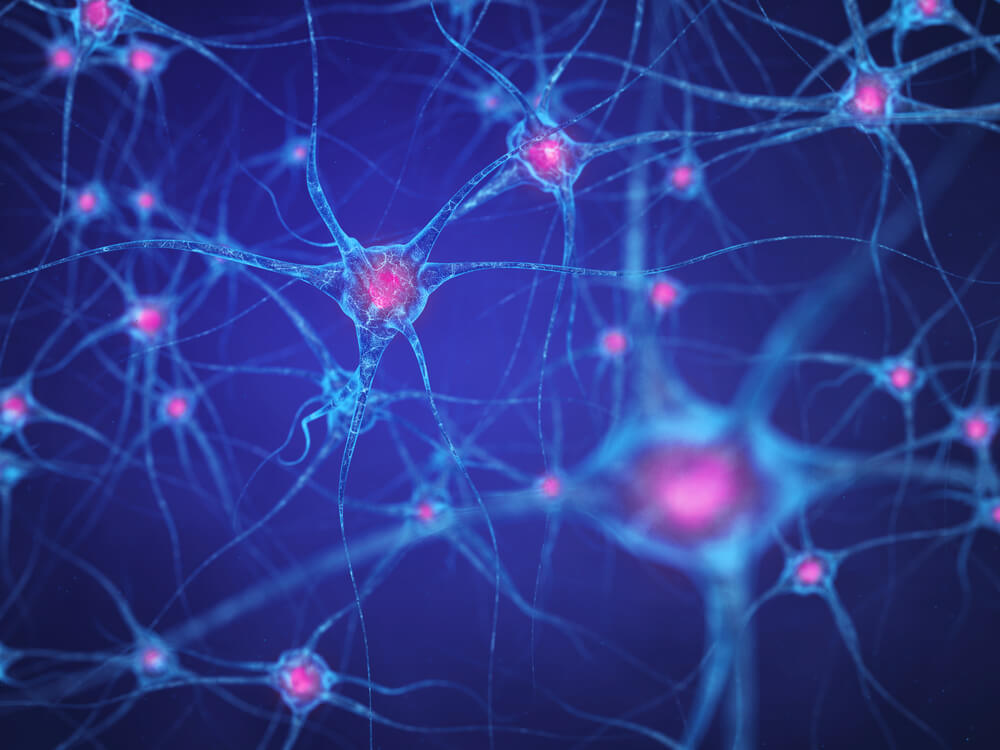Partnering for Recovery: Aviv Clinics and Koterra Partner to Offer PTSD and TBI Treatment for Veterans
Partnering for Recovery: Aviv Clinics and Koterra Partner to Offer PTSD and TBI Treatment for Veterans
The Invisible Wounds of Military Service
Tens of thousands of U.S. Veterans live with the invisible wounds of service: chronic pain, emotional distress, cognitive decline, and difficulty functioning in daily life. These symptoms are often the chronic effects of traumatic brain injury (TBI), concussions, or post-traumatic stress disorder (PTSD). While TBI and PTSD may be invisible injuries, they can have a very real impact on quality of life.
Despite growing awareness, treatment options for these conditions are limited, and access to effective treatments remains underfunded by federal programs. But that’s beginning to change.
Expanding Access to Veteran Medical Treatment Through Collaboration
On July 1, 2025 at our clinic in central Florida, Aviv Clinics announced our new partnership with Koterra, a nonprofit organization dedicated to helping Veterans access the care they need to recover. Together, we are working to make advanced, evidence-based treatment available to Veterans suffering from PTSD, TBI, and other invisible injuries.
Under this new alliance, Aviv Clinics serves as a Veteran Care Collaborator, providing individualized care for Koterra-sponsored Veterans. Koterra, in turn, raises the funds needed to make treatment possible and collects outcome data to ultimately drive long-term change in Veteran healthcare advocacy.
“As scientific research continues to advance, so too has Koterra’s mission to help Veterans suffering from TBI and related invisible wounds including suicidal ideation, post-traumatic stress, and moral injury,” said Patti Brady, Koterra’s founder and CEO. “Our partnership with Aviv Clinics is uniquely promising. This world-class facility offers comprehensive pre- and post-treatment assessments that position Koterra to achieve its ultimate goal: making this treatment widely accessible through VA and insurance coverage.”
Since Koterra’s founding, the nonprofit has helped fund treatment for 10 Veterans in need of relief from their service-related conditions. Today, 10 more Veterans are on Koterra’s waitlist, ready to access treatment for PTSD and brain injuries through this partnership.
An Urgent Need for Veteran Brain Injury Treatment
In the two decades from 2000-2021, more than 450,000 U.S. service members were diagnosed with a traumatic brain injury. An estimated 11% to 20% of Veterans who served in Iraq and Afghanistan experience PTSD. Among those who have sustained a TBI, the risk of developing PTSD doubles.
These conditions are complex and often resistant to traditional care. While medications and therapies may address symptoms, these interventions frequently overlook the physical damage to brain structure and chemistry caused by both physical and psychological trauma. The demand for innovative, non-pharmaceutical options for Veterans has never been greater.
That’s where the Aviv Medical Program offers hope.
The Aviv Medical Program: Evidence-Based Treatment for Veterans
At Aviv Clinics, we offer a highly personalized program designed to target the root causes of cognitive, neurological and physical challenges. Depending on the individual’s specific needs, the program may include:
- Hyperbaric Oxygen Therapy (HBOT)
- Cognitive exercises
- Physical training
- Nutritional coaching and support
- Additional therapies as prescribed by Aviv’s clinical team
An evidence-based hyperbaric oxygen therapy protocol plays a central role in the Aviv Medical Program. Clinical studies have shown that this therapy can promote neuroplasticity, stimulate stem cell activity, and enhance blood flow in damaged brain tissue. Research conducted by Dr. Shai Efrati and colleagues at the Sagol Center for Hyperbaric Medicine in Israel, where the Aviv hyperbaric protocol was developed, has demonstrated statistically significant improvements in memory, attention, executive function, and PTSD symptom severity in Veterans treated with HBOT.
Watch: CBS Sunday Morning reports on the Aviv Protocol for treating PTSD.
The Aviv Medical Program is not a one-size-fits-all treatment. Each plan is tailored to the Veteran’s needs, guided by a detailed series of assessments and evaluations. Our evidence-based care for Veterans offers measurable results in both physical and cognitive performance.
Koterra’s Mission: Veteran Healthcare Funding and Advocacy
Koterra was created to ensure that more Veterans have access to therapies that can truly change their lives, regardless of whether those treatments are currently covered by insurance or the VA. But the organization’s mission goes far beyond direct support.
Koterra is actively involved in Veteran healthcare advocacy, working to influence long-term policy change. By collecting and sharing clinical data from each Veteran they sponsor, Koterra helps build the case that innovative, science-backed PTSD and TBI treatments should be covered by both the VA and private insurers.
“Our partnership with Koterra is a powerful step toward making life-changing treatments more accessible to the Veterans who need them most,” says Dion Atchison, Aviv Clinics COO and U.S. Army Veteran. “Together, we are providing vital care that can help improve the cognitive and physical well-being of Veterans, and in turn, gathering critical data that will support the broader adoption of therapies like hyperbaric oxygen therapy in the VA system.”
Building Momentum: Expanding Access to HBOT for Veterans Nationwide
That advocacy, by Koterra and other like-minded organizations, is beginning to gain traction. Several states have launched pilot programs through their Veterans Affairs departments to cover HBOT for qualified Veterans. And at the federal level, momentum is building. In May 2024, the HBOT Access Act for Veterans — a bipartisan bill introduced in the U.S. House of Representatives — moved forward after passing out of the House Committee on Veterans’ Affairs. If signed into law, the bill would potentially expand access to HBOT for Veterans struggling with TBI and PTSD.
Koterra’s work, in partnership with Aviv Clinics, is helping lay the groundwork to support further change.
How You Can Help Fund PTSD and TBI Treatment for Veterans
Veterans who complete the Aviv Medical Program often describe it as transformative. They report clearer thinking, improved mood, better sleep, and renewed energy. Many return to work, reconnect with loved ones, and reclaim parts of their lives that once felt out of reach.
Veteran Treatment Success Story: Norman Moser
One such Veteran is Norman Moser, who sustained multiple traumatic brain injuries during his 40 years of military service. Battling severe suicidal ideation, Moser came to Koterra in search of lasting healing and found it through treatment at Aviv. Today, his cognitive function, sleep, anxiety, and physical endurance have dramatically improved.
“After decades of living with the invisible wounds of service—traumatic brain injuries, memory loss, and relentless anxiety—I had nearly given up hope. Aviv didn’t just help me recover; it gave me my life back,” said Moser. “I can think clearly, sleep deeply, and enjoy things I thought I’d lost forever, like reading and driving. My endurance has skyrocketed—I’m running again for the first time in years. For the first time in a long time, I feel strong, focused, and truly alive.”
But for every Veteran like Moser who completes treatment, others are still waiting.
Support Treatment and Advocacy for Veteran Care
Koterra currently has 10 Veterans waiting for funding to receive care at Aviv Clinics. These men and women have served our country and are now seeking the care they need to reclaim their lives.
You can help. If you’d like to sponsor PTSD treatment for Veterans and help fund advanced brain injury support, please consider donating to Koterra today. Your gift will help provide treatment for those on the waitlist and expand access to effective, evidence-based Veteran care.
Visit www.koterra.org/ to make a contribution or learn more.
Can Hyperbaric Oxygen Treatment Improve Memory Function?
Updated: September 27, 2023
When we consider our memories, we often think of them as fleeting images. Though they represent a particular time from our past, memories shape our understanding of the present and guide us on how to move forward.
Over time, preserving memories can become challenging. Managing memory loss is complex, in part due to the various types of memory—procedural, semantic, episodic, and short-term—that ultimately shape our recollections.
Different factors can impact memory function. Perhaps one of the most significant is oxygen.
This recent revelation has helped our team of researchers discover the value hyperbaric oxygen therapy (HBOT) can have on memory loss treatment.

The Research from Aviv Clinic’s Neurocognitive Operations
Recent research led by the Sagol Center for Hyperbaric Medicine and Research in Israel, found oxygen is a rate-limiting factor for memory enhancement even in healthy young subjects. These results indicate memory function is a continuum that does not reach its full potential when we breathe at normal sea level.
Method
The research group recruited 56 participants between the ages of 20 and 39. They randomly assigned each person either to:
- An increased oxygen supply using a unique protocol of hyperbaric oxygen (two atmospheres of 100% oxygen with timed fluctuations) or
- A control group treated with normal air (21% oxygen) at normal atmospheric pressure (1 ATA)
The participants then completed a battery of tests that evaluated their cognitive performance, including the following domains:
- Information processing speed
- Episodic memory
- Working memory
- Cognitive flexibility
- Attention
Results
From all the evaluated domains, participants who received hyperbaric oxygen experienced improvement in episodic memory, the type of memory that allows us to recall events from our past. This group demonstrated a better learning curve and higher memory resilience by preserving more words after an interference (an intermediate list of words).
In the study, published in the journal Biomolecules, researchers suggest:
“The understanding that oxygen is a rate–limiting factor for episodic memory even in healthy young adults and the insight that memory can be further enhanced while being in a hyper-oxygenized environment” can be “important for future development of interventional tools that can be used in daily clinical practice.”
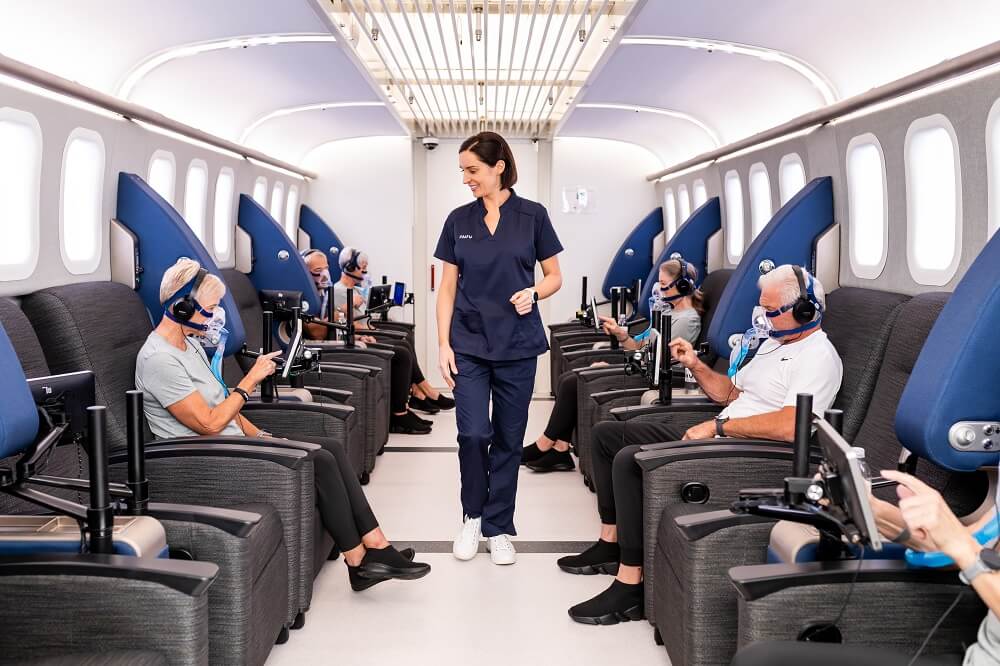
The Role of Hyperbaric Oxygen Therapy in Memory Loss Treatment
While age-related cognitive decline is common, the recent research above notes that anyone, no matter their age, can benefit from hyperbaric oxygen therapy (HBOT). This is promising since various events and progressive conditions such as traumatic brain injuries (TBIs), high blood pressure, dementia, and simply aging can reduce oxygen supply to brain tissue.
There are ways to enhance the outcomes of HBOT. The unique HBOT protocol offered at Aviv Clinics involves fluctuating oxygen levels throughout the session. These variations, coupled with an array of therapeutic strategies, are proven to:
- Elevate oxygen levels in the body
- Regenerate damaged tissue to heal faster
- Provide energy the brain needs to trigger the healing process
The Unique HBOT Protocol in Action
The Aviv Medical Program, which can include this unique, specialized HBOT protocol, has had a significant impact on Aviv’s clients struggling with memory challenges. . Learn about their journey and success with the Aviv Medical Program.
Clarissa Rainey Defeats Memory Decline Upon Her Accident
Rodeo roping and penning champion Clarissa Rainey sustained multiple concussions on horseback, then received an additional concussion in a car accident. She experienced memory loss, which made navigating the ins and outs of her career challenging.
Carl & Vickie Eckert Discover Cognitive and Physical Vitality
Carl and Vickie Eckert felt their quality of life was not what it should be. Feeling the debilitating effects of age, they both feared they would develop dementia as their parents had. Thanks to the Aviv Medical Program, they are active, healthy, and enjoying all that Florida retirement has to offer.
HBOT for Memory Loss Treatment: Things to Consider
We understand seeking treatment is a big decision. Here are a few things to consider as you explore and pursue hyperbaric oxygen therapy for memory challenges:
- Not all hyperbaric oxygen clinics are the same. It’s critical to do your research to understand each clinic’s methodology. Ensure they have on-site medical professionals certified in hyperbaric medicine, use an evidence-based protocol, and track relevant data throughout your health journey.
- Look at the type of oxygen chambers they provide. Only hard-sided chambers can reach the pressure required for medical treatment. There are two main types—monoplace and multiplace chambers. Monoplace chambers are glass or plastic tubes that fit one person, whereas multiplace chambers oversee multiple clients simultaneously. A multiplace chamber, or suite, offers a more comfortable environment and allows medical professionals to be in the chamber to monitor and care for multiple patients.
- Look for a multidisciplinary team of medical professionals who offer comprehensive care and clearly communicate the HBOT process and risks. At Aviv Clinics, our medical team includes physiotherapists, neuropsychologists, nutrition specialists, physicians and others who help set the stage for a successful treatment.
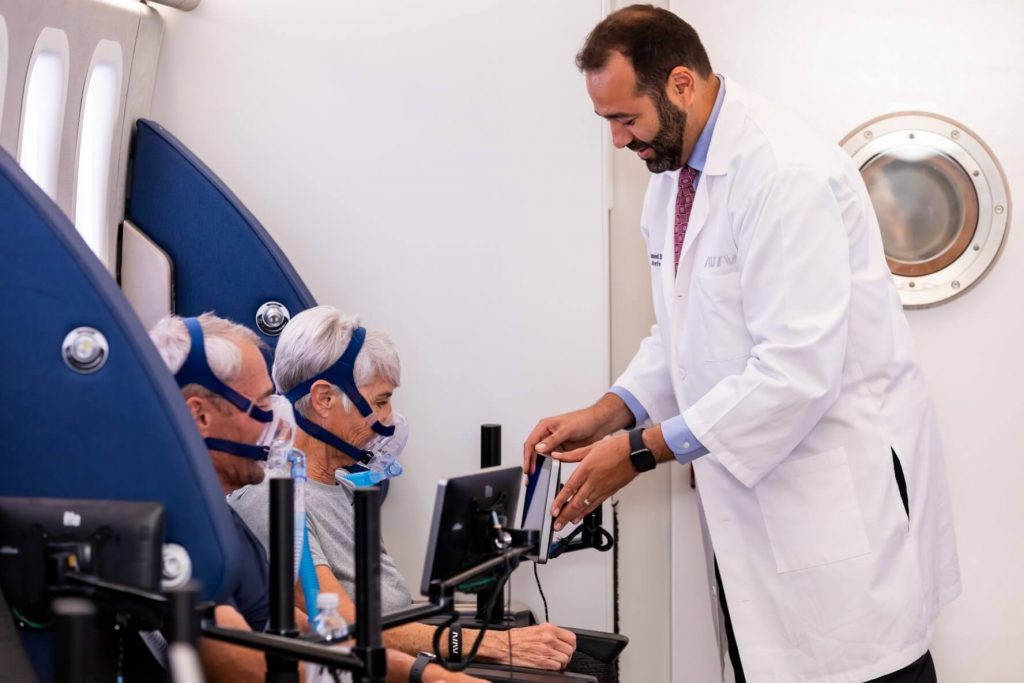
Schedule Your Consultation
Diminished quality of life after an accident or a diagnosis of cognitive decline does not have to be permanent. For more information about how hyperbaric oxygen therapy can improve memory function, schedule a consultation.
Hyperbaric Oxygen Therapy (HBOT) and Stroke
When a stroke happens and life as you once knew it changes, the road to recovery can feel impossibly hard. But rest assured, all is not lost. Aviv Clinics uses advanced tools and therapies to treat stroke by unlocking your mind and body’s natural rejuvenation abilities. Learn all about Hyperbaric oxygen therapy and stroke so you can regain physical vibrancy and emotional well-being.
What Is a Stroke?

A stroke happens when part of the brain’s blood supply is cut off due to a clot or a blood vessel rupture. This impact stops the brain from receiving the oxygen it needs, causing brain cells to die.
- Stroke is the second leading cause of mortality.
- Stroke is the third highest cause of disability worldwide.
- The prevalence of post-stroke cognitive impairment ranges from 20-80%.
- Survivors may suffer from some form of motor dysfunction or brain impairment (i.e., memory loss, difficulty focusing and processing information, and the inability to reason).
The Primary Types of Stroke
The primary types of stroke are:
- Ischemic stroke: Blood clots, fatty deposits (plaque), or other particles block the blood vessels to part of the brain.
- Hemorrhagic stroke: A weakened artery in the brain leaks blood or ruptures, putting too much pressure on brain cells and damaging them.
- Transient ischemic attack (TIA): Not a true stroke (often called a mini stroke, silent stroke, or warning stroke). These are often caused by blood clots and symptoms should not be ignored.
Ischemic strokes make up 87% of all strokes (including TIAs), with hemorrhagic comprising the other 13%.
Hope exists for stroke survivors with the Aviv Medical Program—a customized medical approach that can help stroke patients achieve improved performance and health.
If you or a loved one has suffered from an ischemic or hemorrhagic stroke or a transient ischaemic attack (TIA), we may be able to help.

What Are the Signs and Symptoms of a Stroke?
Timely intervention is critical with stroke. Two million brain cells die every minute during a stroke, increasing the risk of permanent brain damage, disability, and death.
One helpful tool for remembering the key signs and symptoms of a stroke is the F.A.S.T. acronym:
- F–Facial drooping. Is the person able to smile normally? Does one side of the face droop?
- A–Arm weakness. Can the person raise both arms to equal height? Does one drift downward?
- S–Speech difficulty. Is the person slurring their words or having trouble communicating?
- T–Time to call 9-1-1 immediately.
What Are the Symptoms and Signs of a Silent Stroke?
Some people experience a stroke without realizing it. This is called a silent stroke. Symptoms may go unnoticed or be blamed on other health conditions.
There are 10 symptoms and signs of a silent stroke.
1. A lapse in or loss of short-term memory
- Asking a friend to repeat instructions they just told you
- Unable to remember a recent activity you engaged in
2. A decreased ability to think or reason
- Games (e.g., Sudoku, crossword puzzles) are more difficult than usual
- Feeling frustrated about not being able to understand someone
3. Mood changes
- Suddenly irritable, anxious, apathetic, or depressed
- Crying or laughing for no obvious reason or at inappropriate times
4. Psychiatric disorders
- Having hallucinations or delusions
- Engaging in unusual motor behavior (e.g., nibbling food at the dinner table or repeatedly banging your head)
5. Trouble with balance
- Experiencing dizziness or feeling like your head is spinning
- Having trouble making quick adjustments to maintain balance
- Stumbling or bumping into things
6. Movement or walking impairment
- Toes catching on the ground when walking
- Difficulty walking a short distance
- Trouble walking and talking at the same time
7. Limb clumsiness
- Difficulty controlling hand motions
- Trouble typing on the computer
- Having a shaky leg
- Decreased hand-eye coordination
8. Incontinence
- Feeling the urge to urinate more often than usual
- Consciously or unconsciously leaking urine or stool during the day or while asleep at night
- Trouble emptying your bladder completely
9. Headaches or migraines
- Having more headaches or migraines than usual
- Getting long-term, persistent headaches
- Having headaches become severe enough to disrupt your daily activities
10. Vision issues
- Only seeing clearly with intense concentration
- Experiencing double vision
- A decline in the field of vision
How Can the Aviv Medical Program Help with Stroke Relief?
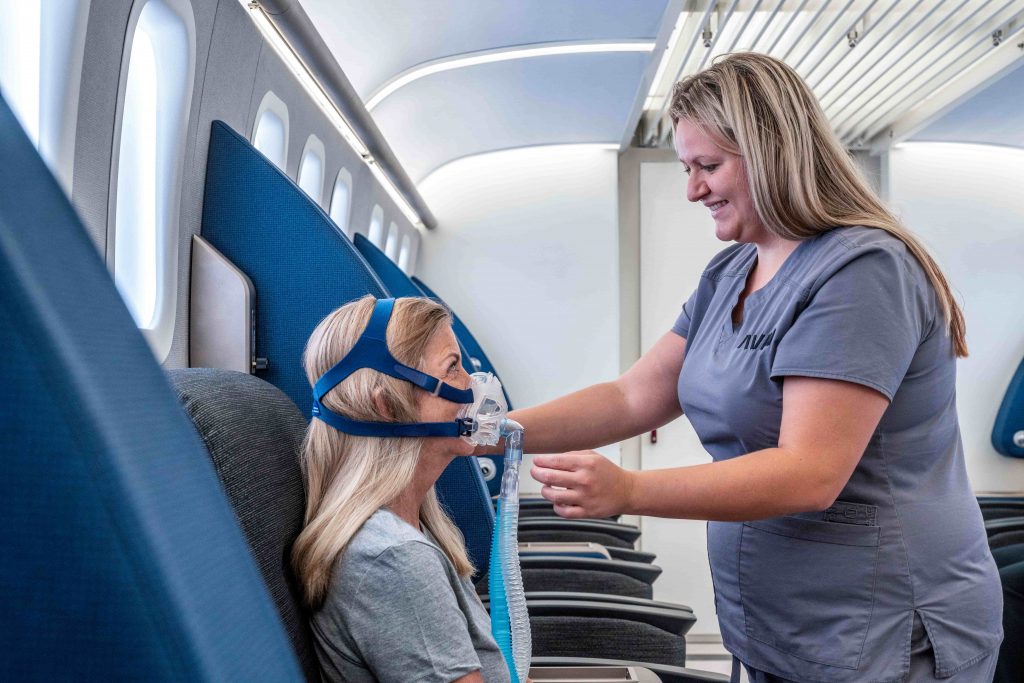
Most stroke survivors are told that their recovery will plateau after about six months, with only the potential for minimal gains after this period. Gaining functions and abilities more than six months post stroke requires working with a diverse medical team of physicians, nurses, and therapists.
Aviv Clinics leverages its comprehensive team to offer a high-quality program that meets your needs. Backed by over a decade of research, the Aviv Medical Program can combine the following in a customized program to help treat the body and brain after a stroke:
- Cognitive training
- Physical training and therapy
- Dietary coaching
- Hyperbaric oxygen therapy (HBOT)
How It Works: A 3-Step Process
Aviv Clinics’ approach entails a three-step process:
- In-depth medical assessment: We diagnose the severity of the brain injury using the most advanced brain imaging tests suited to your needs—perfusion MRI, fMRI, and/or SPECT. Our medical team also conducts physical, cognitive, and neurological tests to assess the suitability for our program.
- Tailored program: We use your results to develop a personalized, comprehensive therapy plan. This plan can include cognitive and physical training, dietary coaching, and hyperbaric oxygen therapy (HBOT) sessions.
- Post-assessment and evaluation: At the conclusion of your Aviv Medical Program, you’ll receive a detailed report of your results, including any cognitive and physical improvements. We repeat the tests from the initial assessment to measure your progress and make recommendations for ongoing progress.
Watch Cindy’s Remarkable Story
Upon suffering a stroke, Cindy sought the help of the Aviv Medical Program.
Learn what her program was like and how her brain and body benefited.
“Because of Aviv, I’m now walking without a cane. The fog and fear are gone. I got in a golf cart within six weeks from the time I started!”
“It didn’t take long at Aviv before I had the courage to try new things. The therapy I’ve gotten, it’s incredible.”
Speak with an Aviv team member to learn if you’re a candidate for our program.
Stay educated on stroke by joining our on demand webinar.
Recovering After a Stroke: Is it ever too late?
The 5 Stages of Stroke Recovery
There are five support stages to post-stroke recovery. Each stage represents a milestone that gets you closer to optimal health.
- Thinking, memory, and perception training: Neuropsychologists typically step in and assesses measures memory, learning, and processing speed.
- Communication and language training: Stroke patients with aphasia are often referred to speech-language pathologists (SLPs). SLPs help individuals relearn communication and language techniques. One study found when early aphasia therapy is provided, “people have a massive increase in their ability to communicate at 12 to 26 weeks after their stroke.”
- Exercise and mobility training: Physical challenges are common among stroke survivors, meriting a physical therapist (PT) who can help patients relearn and regain physical activity. Consistent PT lowers the risk of hospital readmission among post-stroke patients.
- Nutritional training: Nutritional training can be beneficial, especially for those who are unable to swallow well or experience difficulties using their arms/hands to eat. Dieticians can also address those concerns and provide recommendations.
- Hyperbaric oxygen therapy (HBOT): More than a decade of research illustrates the benefits of using HBOT post stroke. HBOT for stroke patients is a therapy process where patients are prescribed time in an oxygen chamber, breathing in 100% oxygen at fluctuating levels. Researchers have noted significant improvement in stroke patients after treatment with HBOT, even several years after the stroke.
What Role Does HBOT and Stroke Play in Improving Your Post-Stroke Life?
Aviv Clinic’s hyperbaric chambers pressurize air to above atmospheric levels. This environment increases oxygen levels in the body up to 20 times higher than normal, delivering oxygen to damaged cells injured by stroke.
The Aviv unique HBOT protocol for stroke uses a scientifically validated process in which oxygen levels fluctuate throughout the session. This fluctuation triggers the body into cell repair and regeneration mode.
What Benefits Can Stroke Survivors Achieve?
When combined with personalized cognitive, physical, and nutritional plans, HBOT as a part of your stroke regimen may produce impressive outcomes, even years after a stroke:
- Regained speech and ability to read/write
- Restored motor function, even with paresis
- Return to independence in performing daily activities
Many of our clients report the biggest benefit is simply not being “a burden” on their loved ones.
Here is the full breakdown of how our medical program can impact the brain, body, and cells even years after suffering a stroke.
Benefits for your brain*:
- Rejuvenation of injured brain tissue, restoring some impacted functions
- Increased blood flow in the parts of the brain associated with sensation, memory, vision, and attention
- New stem cells and blood vessels in the brain (angiogenesis)
- Improved psychomotor function (the combination of precise motor responses and cognitive problem-solving abilities)
- Triggered neuroplasticity (the brain’s ability to adapt/react in response to injury or disease) in injured parts of the brain
- Triggered neurogenesis (neuronal, or nerve cell) regeneration that occurs in the brain.
- Improved overall quality of life
*Individual patient results may vary.
Benefits for your body*:
- Better physical performance: mobility, fitness, strength, coordination, balance, gait
- Improved NIHSS (neurological motor function score), ADL (activities of daily living score), and EQ-5D (quality of life score)
- Boosted power and stamina
- Reduced pain (strong anti-inflammatory effect)
- Improved sleep quality
- Improved sexual performance
*Individual patient results may vary.
Benefits for your cells*:
- Strengthened immune system
- Encouragement for stem cells (the building blocks of tissue rejuvenation) to multiply and migrate
- Lengthened telomeres (the protective caps at the end of each strand of DNA) associated with extending our biological clock
- Reduced senescent cells (known to contribute to many age-related diseases)
- Increased mitochondrial function (the power center of the cell)
*Individual patient results may vary.
How Soon after a Stroke Can a Patient Participate in the Aviv Medical Program?
We recommend waiting three to six months after the stroke to participate in the Aviv Medical Program. This time allows the brain’s natural-healing progression to take hold, but even years after suffering a stroke, patients can see significant improvements. We’ve seen success in clients who were as many as 10 years into their stroke recovery.
Aviv Clinics Is Changing the Lives of Stroke Victims, One Patient at a Time
Backed by over 15 years of research, the Aviv Medical Program was formed under the scientific leadership of Dr. Shai Efrati—Director of the Sagol Center for Hyperbaric Medicine and Research at the Shamir Medical Center in Israel. Recent clinical studies at the Shamir Medical Center have evaluated the effects of HBOT on stroke patients suffering from neurological deficiencies.
Over 2,000 clients have been successfully treated with the Aviv protocol to date.
Post-Stroke Recovery: 4 Tips to Keep in Mind
To ensure the most successful post-stroke recovery, stay mindful of the following:
- Several factors influence recovery: What recovery looks like and how long it takes is different for everyone because of where in the brain the stroke happened, how much of the brain was affected, and other factors.
- Repetitive practice is key: Just like learning a new musical instrument, repetitive practice is the most important element in any neurorehabilitation program.
- Recurrent stroke prevention should be approached with vigilance: Nearly one in four stroke patients has had a stroke in the past.
- Measuring progress matters: Working with a premier medical staff that captures and tracks data is critical to success. The Aviv Medical Program tracks analytics to provide a detailed report of your health and progress.
Speak with an Aviv team member to learn if you’re a candidate for the program.
Hyperbaric Oxygen Therapy for Stroke Patients Helps Regain Functions
When a stroke happens and life as you once knew it changes, the road to recovery can feel impossibly hard.
But rest assured, all is not lost. Aviv Clinics uses advanced tools and therapies to treat stroke by unlocking your mind and body’s natural regeneration mechanisms. Learn all about Aviv’s protocol, which can include hyperbaric oxygen therapy for stroke patients so you can regain physical vibrancy and emotional well-being.
“Clinical evidence suggests that treatment with a specialized hyperbaric oxygen therapy protocol can induce brain neuroplasticity and improve memory, attention, executive function, information processing, speed, and motor skills in post-stroke patients, even years after the initial stroke.”
Claim your spot in our upcoming stroke webinar.
Recovering After a Stroke: Is it ever too late?
What Is Hyperbaric Oxygen Therapy?
Hyperbaric oxygen therapy (HBOT) is a type of therapy where patients breathe 100% pure medical-grade oxygen in a pressurized chamber. This impact boosts oxygen levels in the body up to 20 times higher than normal, helping speed up the body’s self-healing mechanisms.
How Does Aviv’s Unique HBOT Protocol for Stroke Work?
When a stroke occurs, some brain tissue dies while other tissue is damaged. HBOT can help trigger the body to self-repair the damaged brain tissue and improve cognitive function after a stroke.
As part of the Aviv Medical Program, Aviv follows a unique, highly specialized HBOT protocol for stroke that differs from other types of oxygen therapy. Here’s how our process works:
- Aviv uses multiplace oxygen chambers—large hyperbaric treatment suites that can fit up to 14 people—rather than small, cyindrical on-person HBOT chambers.
- Clients breathe 100% pure oxygen through a mask in a pressurized environment, increasing the concentration of oxygen in the blood to help deliver oxygen to the cells that need it. This increase in oxygen concentration is known as hyperoxia.
- Patients follow a specific Aviv protocol where they’re breathing 100% oxygen for 20 minutes and take the mask off for 5 minutes and breathe normal air which the body then perceives as a low-oxygen, hypoxic state. By deceiving the body into believing it is starving for oxygen, this repeated fluctuation triggers the body into cell repair and regeneration mode.
Hyperbaric Oxygen Therapy for Stroke Patients: Clear, Proven Research
Recent clinical studies at The Sagol Center for Hyperbaric Medicine and Research have evaluated the effects of hyperbaric oxygen therapy for stroke patients suffering from neurological deficiencies. These studies show the powerful potential of HBOT as it:
- Triggers neuroplasticity—when healthy parts of the brain assists injured parts of the brain
- Encourages neurogenesis—the creation of new nerve cells
- Creates new blood vessels for higher blood flow and oxygenation of tissue
- Increase neurocognitive abilities in post-stroke patients
We’ll let these research findings and case studies do the rest of the talking:
- “The results indicate that HBOT can lead to significant neurological improvements in post stroke patients even at chronic late stages.” –Dr. Shai Efrati, Founder and Director of The Sagol Center
- “The results illustrate the potential of [HBOT] for improving memory impairments in post stroke patients, even years after the acute event.” –Rahav Boussi-Gross, MA
- “A 64-year-old woman suffered from left hemiparesis—or weakness in the left side of the body—due to ischemic stroke. She had the stroke two years before coming to our program. We significantly improved the blood flow throughout the brain. This person actually had improvement in their left-sided stroke symptoms two years after the stroke.” –Dr. Mohammad Elamir, MD, FACP
Who Can Try HBOT for Stroke Relief?
Stroke survivors at any stage in their recovery timeline can seek treatment with HBOT and other complementary therapies with it.
Though many HBOT studies have been conducted on patients who have experienced their stroke incident within a three-year timeframe, “Dr. Efrati has seen similar improvement in patients whose brain injuries occurred up to 20 years before.” This refutes “the concept that the brain has a limited window for growth and change.”
Watch Cindy’s Remarkable Story
Nearly four years after suffering a devastating stroke, Cindy Parsons. was still waiting and experiencing the lasting effects that left her unable to independently perform many daily tasks — until she discovered Aviv Clinics. “It didn’t take long at Aviv before I was able to get the courage to try things. And now, that fear is almost, I’d say 95% gone. I wanted to be able to comb my hair. I wanted to drive. And yes, because of Aviv, I am able to do those things — and it has changed my life.”
How Can the Aviv Medical Program Help with Stroke Relief?
Our program was developed based on Dr. Efrati’s research. Gaining functions and abilities more than six months post stroke requires working with a diverse medical team of physicians, nurses, and therapists. Aviv Clinics leverages its comprehensive team to offer a high-quality program that meets your needs.
The Aviv Medical Program can combine the following in a customized program to help treat the body and brain after a stroke:
- Cognitive training
- Physical training and therapy
- Dietary coaching
- Hyperbaric oxygen therapy
“How can you put a price on relying on your mind?…[The Aviv Medical Program] is a commitment to yourself. It’s a commitment to your health.” — Keren Trabelsi, stroke survivor and former Aviv Clinics patient
How It Works: A 3-Step Process
Aviv Clinics’ approach entails a three-step process:
- In-depth medical assessment: Our assessment process will identify how much of your brain tissue died from the stroke and how much of it is merely injured—these are areas we ultimately want to focus on to help regain your capabilities. We use the most advanced brain imaging tests suited to your needs—perfusion MRI, fMRI, and/or SPECT. The Aviv team also conducts physical, cognitive, and neurological tests to evaluate your function in these areas and establish a baseline.
- Tailored program: We use your results to develop a personalized, comprehensive therapy plan. This plan can include cognitive and physical training, dietary coaching, and hyperbaric oxygen therapy (HBOT) sessions. HBOT sessions are typically conducted two hours a day, five days a week, for 12 weeks, with additional therapies scheduled based on your recovery needs and goals.
- Post-assessment and evaluation: At the conclusion of your Aviv Medical Program treatments, you’ll receive a detailed report of your results, including any cognitive and physical changes. We repeat the tests from the initial assessment to measure your improvement and make recommendations for ongoing progress.
Please keep in mind, not everyone will be a candidate for the Aviv Medical Program. Our rigorous assessment process will ensure that we can actually help you in a way that elevates the quality of your life.
Learn if you qualify for our program
What Benefits Can Stroke Survivors Achieve with HBOT?
When combined with personalized cognitive, physical, and nutritional therapies, HBOT as a part of your stroke regimen may produce impressive outcomes, even years after a stroke:
- Improved speech and ability to read/write
- Restored motor function, even with paresis
- Return to independence in performing many activities of daily living
Many of our clients report the biggest benefit is simply not being “a burden” on their loved ones.

Here is the full breakdown of how our program can impact the brain, body, and cells even years after suffering a stroke.
Benefits for your brain*:
- Rejuvenation of injured brain tissue, restoring some impacted functions
- Increased blood flow in the parts of the brain associated with sensation, memory, vision, and attention
- New stem cells and blood vessels in the brain (angiogenesis)
- Improved psychomotor function (the combination of precise motor responses and cognitive problem-solving abilities)
- Triggered neuroplasticity (the brain’s ability to adapt/react in response to injury or disease) in injured parts of the brain
- Triggered neurogenesis (neuronal, or nerve cell) regeneration that occurs in the brain.
- Improved overall quality of life
*Individual patient results may vary.
Benefits for your body*:
- Better physical performance: mobility, fitness, strength, coordination, balance, gait
- Improved NIHSS (neurological motor function score), ADL (activities of daily living score), and EQ-5D (quality of life score)
- Boosted power and stamina
- Reduced pain (strong anti-inflammatory effect)
- Improved sleep quality
- Improved sexual performance
*Individual patient results may vary.
Benefits for your cells*:
- Strengthened immune system
- Encouragement for stem cells (the building blocks of tissue rejuvenation) to multiply and migrate
- Lengthened telomeres (the protective caps at the end of each strand of DNA) associated with extending our biological clock
- Reduced senescent cells (known to contribute to many age-related diseases)
- Increased mitochondrial function (the power center of the cell)
*Individual patient results may vary.
Speak with an Aviv team member to learn if you’re a candidate for our program
How to Prevent a Second Stroke & Other FAQs
When “nearly 1 in 4” strokes occur in people who have had a previous stroke, prevention is critical.
No one should have to live under the shadow and repercussions of a recurring stroke. The Aviv Clinics team is here, equipped with proactive tips on how you may be able to prevent a second stroke and other related topics. We encourage you to use this FAQ guide to enhance and safeguard your health, or contact our team if you have questions about how to prevent a second stroke.
Are Strokes Recurring?
Yes, even after surviving a stroke, there’s a possibility of a recurrence.
However, there are things you can do to lower the risk of having another stroke. The American Stroke Association notes, “up to 80% of strokes may be prevented with a combination of medication and healthy habits.”
What Are the Chances of Having a Second Stroke?
To reiterate, “nearly 1 in 4” strokes are suffered by people who already had one. Johns Hopkins Medicine reports, “of the 795,000 Americans who will have a first stroke this year, 23 percent will suffer a second stroke.”
Physicians note the risk of a second stroke is “highest within the first two days” after the first incident. Survivors remain at risk for “up to three months and even up to one year after the first stroke.” Other studies indicate “the risk of experiencing another stroke, a heart attack, dying or requiring admission to a care facility is doubled for up to five years.”
What Causes a Second Stroke?
The cause of the first stroke can also trigger a second stroke. For example, let’s look at the causes of an ischemic stroke.
The most common type of stroke, ischemic strokes, “account for 87% of strokes in the United States.” These occur when a blood clot blocks or narrows an artery, cutting off the blood supply to the brain.
Risk factors for ischemic stroke include:
- Hypertension
- Diabetes
- Hyperlipidemia (high blood cholesterol)
- Sleep apnea
- Obesity
Other risk factors linked to stroke entail:
- Smoking
- Sedentary lifestyle
- Heart problems
The key is to identify the root cause(s) and speak with your doctor about lowering your risk.
Is a Second Stroke Worse Than the First?
Yes, a second stroke is typically worse than the first due to the additional damage to the brain.
According to research, the second stroke carries “significant cognitive and physical disabilities” compared to the first stroke.
Even those who have had a silent stroke are at risk for more adverse effects—it’s not uncommon to suffer several silent strokes before noticing a significant neurological change.
How Many Brain Cells Die Every Second During a Stroke?
Researchers report a person who has a stroke “loses 1.9 million neurons each minute” following the incident.
Time is of the essence upon a stroke.
Knowing the signs and symptoms of a possible stroke is crucial.
What Are the Common Signs and Symptoms of a Second Stroke?
A helpful way to remember the signs and symptoms of a second stroke is the FAST acronym:
- F: Facial drooping
- A: Arm weakness
- S: Speech difficulty
- T: Time to call 9-1-1
Additional signs and symptoms of a second stroke include:
- Nausea
- Vertigo
- Confusion
- Visual changes
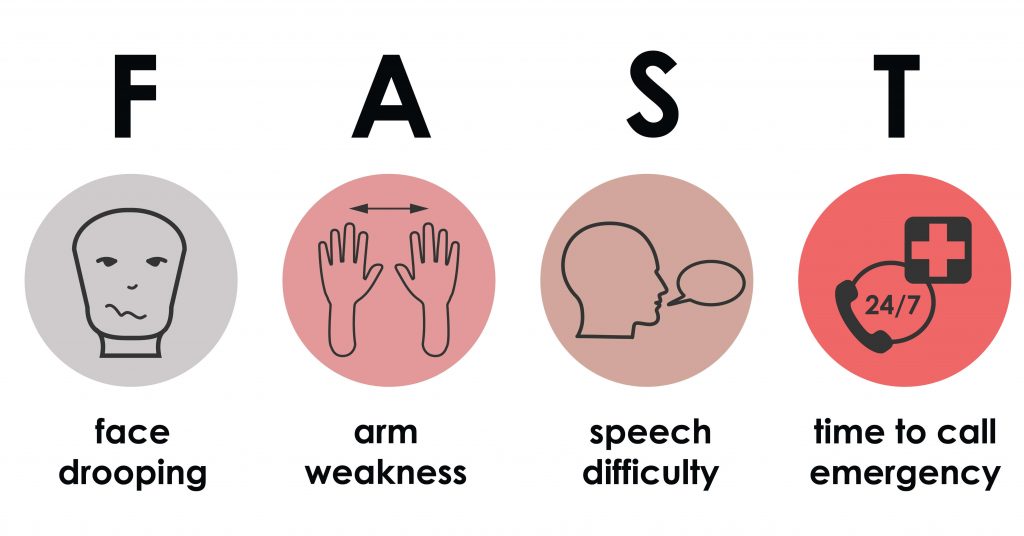
What Are the Chances of Surviving a Second Stroke?
One study found that stroke survivors who have a second stroke are “2.67 times more likely to die than stroke survivors who did not have a second stroke.”
The second stroke inflicts additional damage to the brain, so it’s more challenging to overcome. But getting the proper support through the five stages of stroke security offers plenty of hope for second stroke survivors.
How Can You Prevent a Second Stroke?
The CDC reports, “you can help prevent stroke by making healthy lifestyle choices.”
The following five prevention strategies can help minimize the risk factors of having a second stroke. Please discuss prevention strategies with your physician first before making any lifestyle shifts.
1. Incorporate a Regular Exercise Routine
The Aviv Clinics team recommends at least 30 minutes of physical activity three days a week. Exercise can help manage blood pressure, cholesterol, diabetes, and weight. Try doing an exercise activity you enjoy to help you stay motivated and committed.
Physical performance is one of the key elements of the Aviv Medical Program. Our team of physiologists and physical therapists conducts a thorough evaluation of your physical performance and prescribe a regimen of exercise and physiotherapy designed specifically for your needs and goals to continue recovery after a stroke.

2. Consume More Fruits and Vegetables
Follow a diet rich in fruits and vegetables. These foods contain nutrients that may lower risk factors for stroke.
Learn about the Mediterranean-DASH Intervention for Neurodegenerative Delay (MIND) diet for more tips. It blends two types of diets:
- Mediterranean diet: Foods that promote heart health
- DASH diet: Foods that help with hypertension
Nutrition is also a key element of the Aviv Medical Program. Based on your body composition and nutritional needs, your team of expert clinicians will advise you on the best diet to build the foundation for further recovery.

3. Find Coping Strategies for Stress
Stress is inevitable in life and it’s crucial to find healthy ways to cope with it.
Smoking or consuming alcohol “can raise blood pressure levels and the risk for stroke.” Discover better coping strategies for stress, like the following:
- Practicing meditation
- Seeking therapy or counseling
- Engaging in new hobbies
Aviv’s team of neuropsychological professionals can offer more guidance on improving sleep and reducing stress as part of the Aviv Medical Program.
4. Stay Consistent with Your Medication
Stick with your prescribed medication. It can lower your risk of having a secondary stroke. Studies report:
People with heart disease who took “75 percent or less of their medications as prescribed had a four times higher risk of stroke” than those who took their medicine as directed.
5. Learn About Hyperbaric Oxygen Therapy (HBOT)
Decades of research illustrate HBOT can lead to neurological improvements in post-stroke patients—even at chronic late stages. These findings offer hope for survivors who had a stroke months or years earlier.
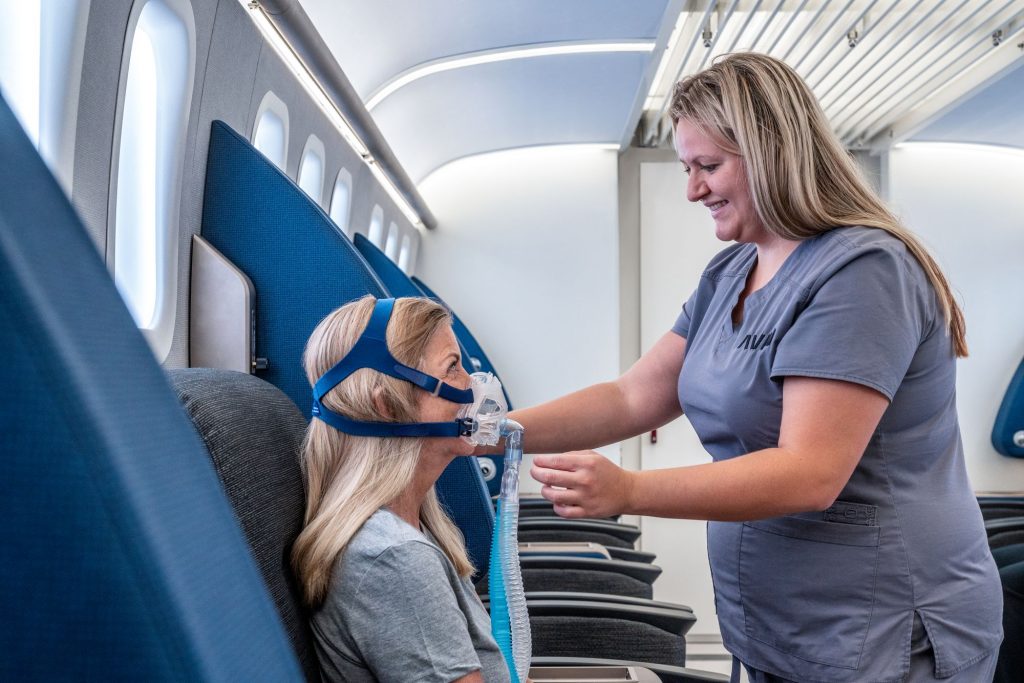
Aviv’s evidence-based HBOT protocol includes fluctuating high and normal oxygen levels during multiple sessions over the course of twelve weeks. These fluctuations and additional therapeutic programs encourage the body to heal damaged brain tissue and create new blood vessels, improving the flow of blood to the brain. Remember that restricted blood flow is one of the primary causes of strokes.
Learn more about Aviv Clinic’s unique HBOT protocol, part of the comprehensive Aviv Medical Program which can include HBOT as well as cognitive and physical training and nutrition coaching to promote better health and reduce stroke risk.
Safeguard Your Health with Aviv Clinics
Aviv Clinic’s research-based program has helped thousands of patients improve their quality of life after a stroke. If you or your loved one has had a stroke, our medical team in Florida is here to lend a hand.
Asking “What Can HBOT Treat?” Is Like Asking Why Oxygen Matters
Every time you take a breath, your body receives vital oxygen, which helps it to grow, function, and convert the food you eat into energy. Oxygen is also vital in cellular function and brain activity.
But inhalation isn’t always enough to supply the body with the oxygen needed for optimal functionality and healing. Learn more about how to regulate and elevate the oxygen in your body, as well as how treatment options can resolve ongoing health conditions and symptoms.
What Is HBOT?
Hyperbaric oxygen therapy (HBOT) is a process that elevates the amount of oxygen in the body.
Patients breathe in 100% oxygen in a pressurized environment, which can help:
- Increase the amount of oxygen in the blood
- Regenerate damaged tissue to heal faster
In other words, HBOT can help patients live healthier and happier lives.
Why People Seek Out HBOT
Patrick Bol experienced lingering symptoms of COVID that extended well beyond the expected recovery period. Watch Patrick’s journey below!
While Patrick turned to Aviv for relief of his long COVID symptoms, the Aviv Medical Program, which can include HBOT, offers a clinically-tested treatment option for a number of conditions.
14-year-old Linden Perry suffered post-concussion syndrome after multiple concussions sustained while playing basketball and soccer.
74-year-old Trice Hirr couldn’t get back to her competitive swimming speed because of a history of injuries and a hip replacement.
Lyndi Scott-Strite suffered from symptoms of Lyme disease, which made her step back from her usual activities and routine.
The stress from her husband’s illness put pressure on Zizi McKinnon’s mental and physical health.
This common thread that binds these individuals is not just about health—it’s about taking control of their minds and bodies to help them live life the way they want. No one deserves to live an average life, plagued with discomfort or health problems.
Living a full and active life comes down to finding the right team of medical professionals, and you’ve come to the right place. Aviv Clinics is here to support you in your journey back to optimal health.
The Aviv Medical Program treatment can include hyperbaric oxygen therapy. We are proud to offer HBOT as a part of our program to help patients finally experience relief from a range of conditions, so they can start living their life to the fullest again. This could be you.
Why Does Hyperbaric Oxygen Therapy Matter?
HBOT revitalizes your body by increasing the oxygen concentration in the body. For wound healing, it delivers oxygen-rich plasma to areas that have been slow to heal.
Whether you’re experiencing a decline in sports performance or lingering symptoms from an illness or injury that occurred months or even years ago, your physician may determine HBOT to be a beneficial component of your treatment plan.
“With a chronic illness, it can feel like you’re done living…I feel like I am myself again.” Lyndi Scott-Strite, former Aviv patient
“[The Aviv Medical Program] was more for a survival perspective. I wanted to keep my job. I wanted to keep on living. I wanted to keep being an outdoors person and be there for my family.” Patrick Bol, former Aviv patient
HBOT: A Research-Backed Therapy Program
Oxygen and HBOT are at the forefront of innovative medical research. And for good reason—every tissue and cell in our bodies need a constant supply of oxygen to work properly.
Oxygen also serves the following functions in the human body:
- Promotes blood circulation
- Reduces inflammation
- Encourages collagen formation
- Help blood vessels grow
HBOT has been used since the 1800s, which demonstrates its longevity and effectiveness over the years. Aviv uses advanced and unique HBOT technology to deliver safe and secure medical treatments. Decades of research illustrate that HBOT may help people suffering from a variety of health conditions, including:
- Stroke
- Post-Concussion syndrome
- Lyme disease
- Long COVID
- Concussion and TBI (traumatic brain injury)
- PTSD (Post-traumatic stress disorder)
- MCI (mild cognitive impairment)
How Does HBOT Work?
Here’s what to expect during your HBOT journey as a part of the Aviv Medical Program:
1. You’ll enter a hyperbaric oxygen chamber. This spacious HBOT chamber feels similar to the business class section on an airplane. You’ll sit comfortably and breathe through a custom-fitted oxygen mask. Patients generally don’t feel anything during this process. Most play brain exercise games on a tablet during their HBOT sessions. Others listen to podcasts or learn a new language.

2. You’ll rotate between breathing through the mask and breathing air. During the HBOT treatment, you will alternate between breathing 100% pure oxygen and medical-grade air. Our medical staff will help you prepare for HBOT before your first session.

3. You’ll come back for repeated HBOT sessions. Most of our patients complete roughly 60 sessions altogether, but your Aviv Clinics physician will determine the treatment plan that’s right for you. Medical staff will be in the oxygen chamber with you at all times to ensure your comfort and that the process goes smoothly. At the end of your treatment, you’ll receive detailed before-and-after reports that outline your progress.
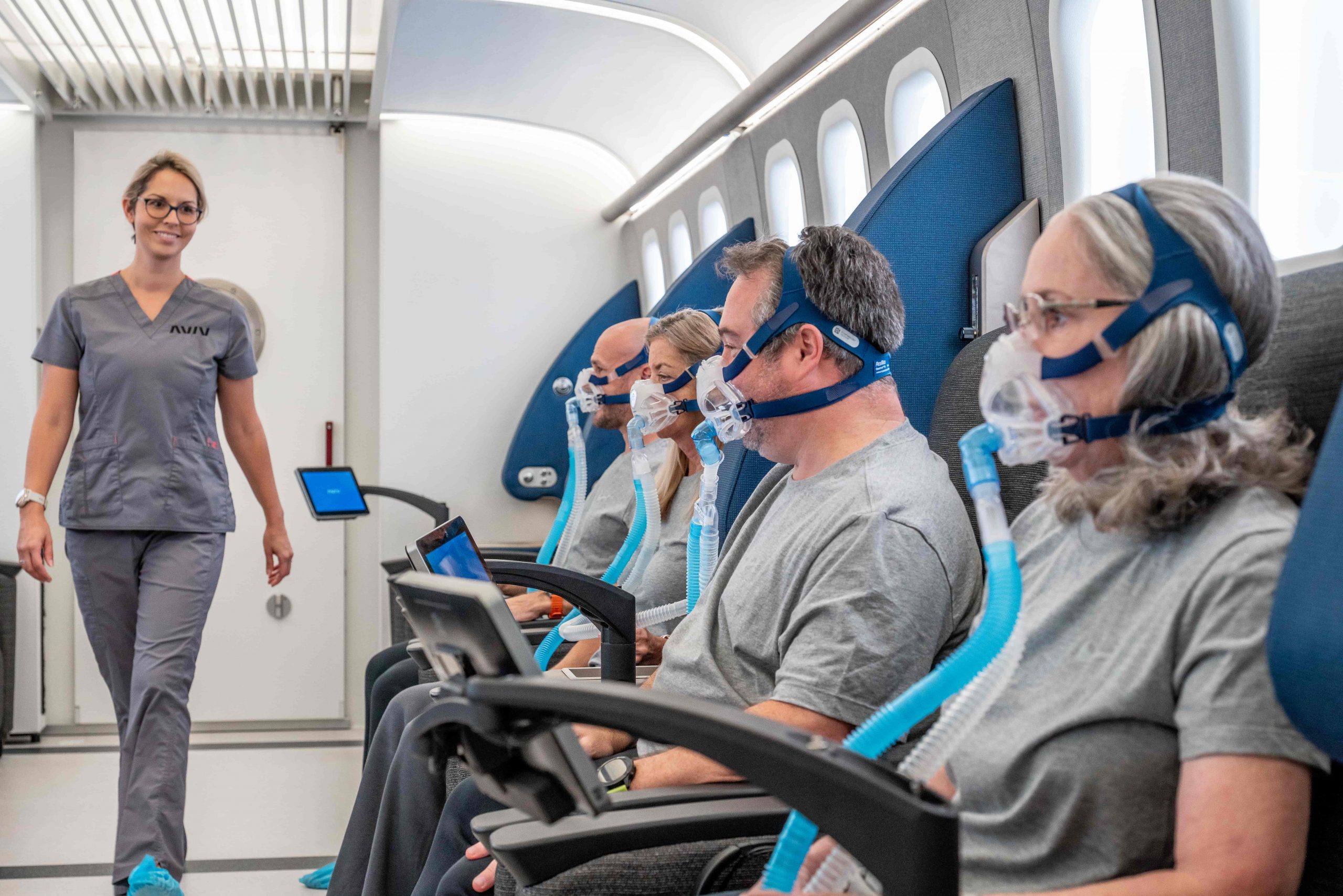
Aviv’s Holistic Approach
A holistic approach to recovery can include HBOT coupled with additional therapies for a more comprehensive treatment. Your holistic plan may include:
- HBOT
- Cognitive training
- Physical training
- Nutritional coaching
Our holistic medical protocol delivers incredible results, which are often greater than what research studies illustrate. Each body ages and functions differently, so it’s imperative that your plan is uniquely your own.
“At your beck and call, you have a physician, dietitian, physical therapist… so many professional people who will help you. What came out was a plan for me—just for me.” ZiZi McKinnon, former Aviv patient
“You get to work with everybody from the neurologist who works with you on brain games to the dietitian who helps you with your diet. For Lyme disease, that’s extremely important.” Lyndi Scott-Strite, former Aviv patient
If you believe that you or a loved one would benefit from hyperbaric oxygen therapy in Florida as part of the Aviv Medical Program, contact our team of certified medical professionals today. Contact Us!
How Long Does HBOT Take to See Results?
Most people see improvement from the Aviv Medical Program very early in the 8-12 weeks of therapy and see medically verifiable results at the end of their treatment. This time frame allows the body to begin maximizing its ability to regenerate cells and blood vessels.
Keep in mind, there is no one-size-fits-all approach. You’ll receive your own unique, holistic therapy plan that can include HBOT, so outcomes and timelines will vary.
We’ve had patients who were amazed at how much more weight they can lift at the gym, how they can think through and remember things more clearly, and how energetic they feel each day.
Aviv Clinics provides objective data during your treatment plan to assess your oxygen levels and brain output before and after implementing HBOT coupled with other therapies. Our ability to quantify your health plan is ultimately what can give you hope.
How Long Do the Effects of Hyperbaric Oxygen Therapy Last?
We strive for long-lasting effects of the Aviv Medical Program for every patient. Our relationship with you does not stop at the end of your plan timeline. We’ll send you off with a wearable device and continue to check in with you and send reports on your health and performance.
“I’m five months after the program, and I really do feel a lot calmer. I’ve been able to think through things more clearly. Before I was losing confidence, I was in a panic… now I plan to tap dance until I’m 120 years old!” ZiZi McKinnon, former Aviv patient
HBOT for Various Conditions
HBOT can bring hope to those dealing with various unique medical challenges. Here are some conditions Aviv can help you fight.
Aging
Researchers discovered HBOT may improve signs of aging by:
- Improving cognitive function, specifically attention span, information processing, multitasking, and memory,
- Lowering the number of cells responsible for aging,
- Increasing telomere length.
SPECT brain scan images of anti-aging before and after HBOT trials suggest positive effects of HBOT on aging.
Post-Stroke
One research study suggests HBOT can significantly improve post-stroke conditions. Study participants described an improved quality of life. When combined with proper nutrition, exercise, and regular assessments, HBOT may help post-stroke patients regain their speech, motor functions, and independence in performing day-to-day tasks.
Mild Cognitive Decline
HBOT’s ability to increase blood flow to the brain shows promise in improving memory function. The number of brain vessels naturally declines with age, and HBOT can help lessen this effect. One study suggests that HBOT can help combat memory loss and reverse early biomarkers of Alzheimer’s disease.
Traumatic Brain Injury (TBI) and Post-Concussion Syndrome (PCS)
Approximately 30-40% of those who suffer concussions or traumatic brain injuries experience lingering symptoms. This condition is called post-concussion syndrome (PCS) or persistent post-concussive syndrome (PPCS) and merits careful medical attention.
While the brain is an impressive organ with millions of capabilities, sometimes it needs intervention and treatment to fully heal and function at its best. Studies indicate HBOT may improve PCS, even years after a mild traumatic brain injury event.
“I’ve noticed that my balance, which was really thrown off when I first got [to Aviv], is coming back now.” Linden Perry, PCS survivor and Aviv Clinics patient
Lyme Disease
Chronic Lyme disease is one of the most challenging illnesses to recover from. Patients often receive little relief from antibiotic-heavy therapies. Luckily, recent research suggests that HBOT may improve symptoms of Lyme disease in patients who have taken antibiotics for at least 10 years.
“I now have a solution. I have a way to get back to this place where I’m feeling energized, I’m feeling vital, I’m feeling like I can take on the world again.” Lyndi Scott-Strite, Lyme disease survivor and Aviv Clinics patient
Fibromyalgia
In one research study, fibromyalgia patients who underwent HBOT sessions five days per week over 12 weeks experienced less chronic pain. Further research needs to be conducted, but these early studies suggest that HBOT may help fibromyalgia patients live a more comfortable life.
Start Your Healing Journey with Aviv
If you’re looking for answers and solutions to your challenging medical conditions, reach out to the Aviv staff. You’ll speak directly to a member of our comprehensive team of certified medical specialists. During your first call, we’ll discuss your medical background to determine if the Aviv Medical Program may be right for you.
As Dr. Mohammed Elamir, MD, FACP, puts it: “The Aviv Medical Program can be successful because it addresses the cause of the symptoms, not just the symptoms alone. In combination with cognitive, physical, and nutritional coaching, some HBOT protocols can be very effective.”
Contact our HBOT Florida medical professionals to talk about how you can incorporate hyperbaric oxygen therapy benefits into your healing and relief journey.
Age-Related Cognitive Decline: The Science That Slows It Down
Cognitive health — the ability to think clearly, learn, and remember — is essential in helping us live happy and fulfilling lives.
Maintaining our cognitive health can become a challenge as we get older. Like the physical changes that occur in our bodies (e.g., stiff joints, wrinkles, etc.), our brain’s cognition also changes slowly and subtly over time.
You may notice you’re struggling to pay attention, for example, or find you’re having trouble recalling conversations or people’s names. These experiences are a natural part of aging and manifest as a condition coined age-related cognitive decline.
Cognitive Decline, the Earliest Symptom of Dementia and Alzheimer’s Disease
According to the Centers for Disease Control and Prevention (CDC), cognitive decline is a self-reported experience of “worsening or more frequent confusion or memory loss.” It’s considered one of the earliest symptoms of Alzheimer’s disease and other related dementias.
There are different forms of cognitive decline. One type of cognitive decline is mild cognitive impairment (MCI)—the early stage of memory or cognitive ability loss. It’s the phase between natural cognitive decline (due to aging) and the more serious decline.
While experiences may be different person-to-person and can vary daily in scope and severity, common age-related cognitive decline symptoms include the following areas:
- Memory: Forgetting names, dates, and places becomes more frequent. You may place items in odd locations (e.g., car keys in the refrigerator).
- Language: Forming words, phrases, or sentences becomes increasingly more challenging.
- Thinking or judgment: You may lose track of time or your train of thought. Making decisions also becomes more difficult or overwhelming.
- Apathy: An oft-overlooked symptom, suddenly losing interest in your favorite activities and people or giving up when something feels difficult can signal a mental withdrawal during the decline process.
- Incessant rumination: People experiencing cognitive decline can feel chronic stress or get stuck in a fight-or-flight response.
- Other Conditions: Many illnesses and chronic conditions are associated with cognitive decline. They include influenza, gastroenteritis, sleep disorders, diabetes, and cardiovascular issues.
If you are experiencing any of these symptoms, take the opportunity to have a conversation with an Aviv Clinics physician to assess their severity and what you can do to improve your cognitive health.
Why Age-Related Cognitive Decline Occurs
There are four main reasons age-related cognitive decline may occur:
- Hormonal imbalance: As we age, it’s natural for hormonal imbalances to happen. Research indicates these changes are a key factor in the decline of cognitive function.
- Stroke and head injuries: Head injuries and stroke can damage blood vessels in the brain, which may incite cognitive impairment and even vascular dementia. Even a minor head injury sustained many years in the past increases your chances of developing dementia.
- Psychiatric disorders: Disorders like depression and anxiety have been connected to cognitive and functional decline. They are commonly experienced by MCI patients and can either be a contributing factor or a symptom.
- Heart conditions: Research shows that those in their 40s to early 60s with high blood pressure have a higher risk of experiencing cognitive decline later in life. Lowering blood pressure decreases the risk for MCI.
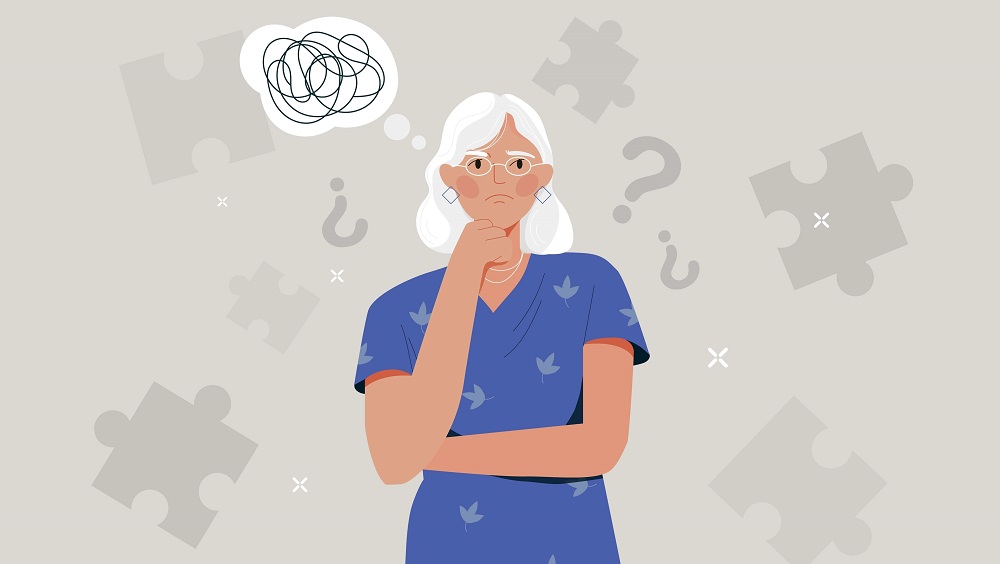
Disorders Related to Age-Related Cognitive Decline
Approximately 12% to 18% of individuals over age 60 live with mild cognitive impairment. If left untreated, MCI can bring on various disorders related to more significant age-related cognitive decline.
Approximately 10% to 15% of people with MCI develop dementia every year. Dementia is an umbrella term that encompasses a variety of neurological conditions. These conditions negatively affect the brain—nerve cells stop functioning normally and eventually die, causing cognitive decline.
There are different types of dementia, such as:
- Alzheimer’s disease: Those with MCI are at greater risk of developing Alzheimer’s disease—the most common dementia diagnosis. In addition to cognitive decline, those with Alzheimer’s may experience shifts in behavior and personality. Read about the risk factors for Alzheimer’s disease.
- Frontotemporal dementia (FTD): FTD can occur when there is damage to the frontal and temporal lobes of the brain. Someone with FTD can show unusual behaviors, emotional problems, and difficulty communicating.
- Lewy body dementia (LBD): LBD happens when protein builds up in the brain. Common symptoms of LBD include movement issues (e.g., slowed movements, stiffness, tremors), cognitive issues, and mood shifts.
- Vascular dementia: Vascular dementia occurs due to a lack of blood flow to the brain. People typically experience issues with reasoning, planning, judgment, and memory.
How Science Slows Down Cognitive Decline
Your brain is a superpower, but energy (in the form of oxygen and proper nutrition) is needed to make it so.
If you give your brain energy, especially as you age, you can effectively slow down the aging process.
Aviv has developed a way to harness the power of oxygen using Nobel Prize-winning research. The Aviv Medical Program includes a variety of therapies, including Hyperbaric Oxygen Therapy (HBOT). What is HBOT? It involves sending 100% pure, pressurized (10-15 times higher than normal) oxygen to your deprived brain cells and body tissues, turbocharging your body’s own regenerative mechanisms. The result is faster healing of damaged tissues and higher regeneration of stem cells.
If you’re concerned about your (or a loved one’s) age-related cognitive decline, be sure to contact Aviv soon.
Using HBOT to Address TBI and Concussion
Head injuries are much more common than one might think. According to the National Institutes of Health (NIH), an estimated 1.7 million Americans sustain a TBI each year. The Centers for Disease Control and Prevention (CDC) reports that there were over 64,000 TBI-related deaths in 2020, which equates to more than 175 brain injury-related deaths every day.
Those most affected include adolescents aged 15-19 and adults older than 65. Among seniors, falls are the most common cause of TBIs—a pervasive problem that can be mitigated with a few key strategies.
Yet, despite how pervasive TBIs are, many people don’t realize when they’re experiencing the “traumatic” incident. At one time, a mild traumatic brain injury (mTBI), which many know simply as a concussion, was actually thought to be a benign event. With much research, experts now know that even small, repeated injuries to the brain can have significant effects. These injuries can contribute to adverse neuropsychological outcomes—both acutely and long-term.
For example, in the moment, a concussion might cause dizziness, ringing in the ears, blurred vision, and vomiting. But over time, that same injury or repeated injuries may contribute to ongoing symptoms, such as chronic headaches, trouble concentrating or thinking clearly, memory problems, poor sleep, depression, anxiety, and irritability. Some people may not even connect an injury that happened years ago with their current symptoms, which can make it difficult to properly diagnose a TBI or post-concussion syndrome.
Unfortunately, the incidence of TBI and concussion persists. Per the Brain Injury Association of America, cumulative evidence shows that an estimated 5.3 million men, women, and children are living with a permanent TBI-related disability in the U.S. today.
Yet, does it have to be “permanent”?
HBOT’s Role in Relieving TBI Symptoms

Dedicated research into brain healing reveals a therapy that produces positive results in cases of TBI and post-concussion syndrome. Hyperbaric oxygen therapy (HBOT) has historically been accepted as an effective treatment for medical issues like wound healing, severe infections, and decompression sickness. For some time, HBOT had not been explored much beyond those applications.
However, research in the last two decades reveals that HBOT, in combination with certain cognitive, nutritional, and physiological protocols, is able to repair areas of the brain that have been damaged due to TBI and concussion, as well as stroke, post-traumatic stress disorder, fibromyalgia, Lyme disease, and other neurological conditions.
What Results Can Individuals Expect?
To understand how HBOT works to address TBI and post-concussion damage, it’s important to know what changes occur in the brain during those injuries. Structural damage indicates a physical impact on the brain, such as bleeding. Metabolic damage is present when the brain’s cells are affected.
Traditional scans like CT and MRI may not be able to detect metabolic damage, especially if an injury occurred years ago. More advanced scans—like functional MRI and SPECT—are better able to identify areas of the brain that may be producing chronic post-concussion symptoms.
Applying HBOT and the unique protocols of the Aviv Medical Program yields multiple changes in the brain:
- New blood vessel formation (angiogenesis)
- New and stronger neural connections
- Stem cell production
These neural, vascular, and cellular changes contribute to cognitive improvements in memory, executive function, attention, processing speed, and spatial memory. Individuals with brain-based motor skill challenges also benefit from this comprehensive therapy.
Elements of the Aviv Medical Program also include cognitive therapy, strength and physical training, and nutritional coaching. The physiological and nutritional aspects of Aviv Clinics’ customized protocol elicit enhancements such as greater aerobic fitness, higher energy levels, improved sleep, and reduced pain. Overall, individuals report a significant improvement in their quality of life after completing the program
Bottom Line
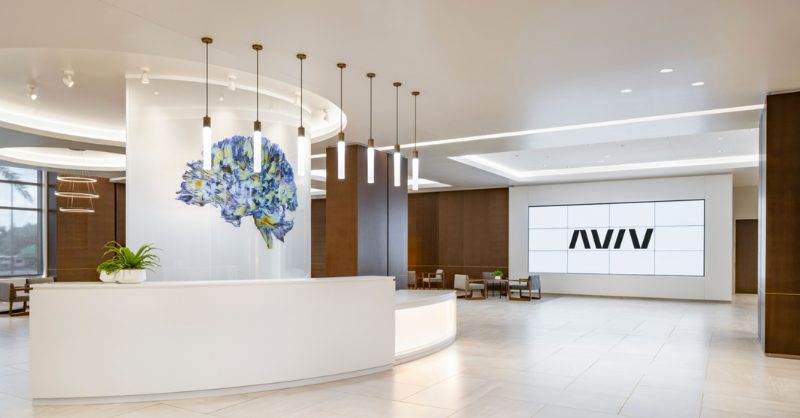
If you’ve ever been in a car accident, fallen off a horse, or had “your bell rung” playing sports, you may have experienced a brain injury that could still be impacting your health. The Aviv Medical Program can help ease your symptoms.
If you or a loved one suspects a TBI or concussion has left lingering symptoms, contact us to learn more about how investing 90 days into treatment could change the rest of your life.
Signs and Symptoms of Lyme Disease
Lyme disease is the most common tick-borne illness in the United States. The Centers for Disease Control and Prevention (CDC) receive approximately 30,000 official reports of Lyme disease annually, but recent CDC estimates suggest that approximately 476,000 individuals develop Lyme disease each year in the U.S. It’s imperative that people recognize the early signs and symptoms to avoid long-term effects, which can be debilitating.
What Causes Lyme Disease?
Lyme disease is a relatively modern affliction. It was first identified in the U.S. in 1975, in the town of Lyme, Connecticut. Since its discovery, scientists have performed numerous studies to understand the disease better, how it’s transmitted, and its biological impact on the human body.
Lyme is most commonly spread by deer ticks primarily found in the Northeast, upper Midwest, and Northwest. Deer ticks are also known as black-legged ticks, Ixodes scapularis, or Ixodes pacificus. These ticks are very small, making them troublesome to see. Some are as tiny as a poppy seed.
These ticks carry the Lyme disease bacterium, Borrelia burgdorferi, which is a spirochete—a highly invasive bacterium. Bacteria quickly move through the skin and break into and out of blood vessels. The Lyme bacteria can even cross the blood-brain barrier. These bacteria are also difficult to kill—especially if left untreated in the very early stages of the infection.
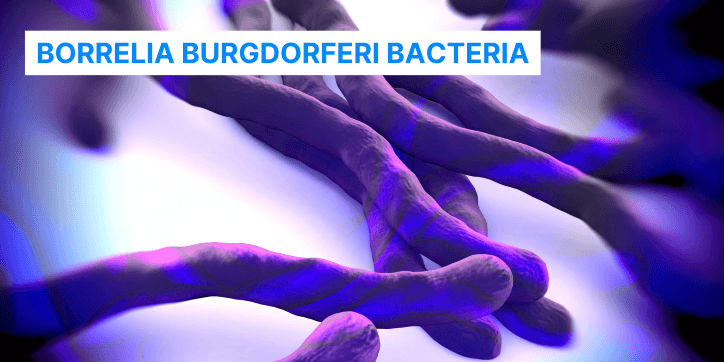
Lyme Disease in Three Stages
There are three main stages of Lyme disease, and each has its own signs and symptoms. Initially, Lyme can manifest itself as a rash known as erythema migrans (EM). The rash expands over time, after the tick bite, sometimes reaching12 inches or more across. It may feel warm to the touch but is rarely painful or itchy. Sometimes, the rash clears in the middle and resembles a bullseye. However, not everyone who is infected exhibits this bullseye indication. Acute signs like EM are key in identifying Lyme because it’s estimated that only about 17% of people recall being bitten by a tick.
Timing is crucial in this acute stage of infection, regardless of whether the individual develops a rash. When a person can identify a tick bite, clean the site right away with antibacterial soap and water, and notify their primary care provider, they may be able to cure the infection in 10-12 days.
Lyme progresses to the subacute stage when an infection goes unnoticed and thus untreated. Individuals may experience flu-like symptoms such as headaches, fever, and chills.
As time goes on, symptoms worsen into joint pain, swelling and other bodily aches, similar to arthritis. By this stage, people are in the “danger zone” of chronic Lyme disease.
Lyme can cause cardiac dysrhythmias, a condition in which the heart is not beating correctly. Cardiac dysrhythmia can eventually cause the heart to fail. Some Lyme patients may need a pacemaker to regulate their heart’s rhythm.
Because the Lyme disease bacterium, Borrelia burgdorferi, crosses the blood-brain barrier, neurological symptoms may result, such as:
- Confusion
- Brain fog
- Facial paralysis or drooping
- Severe head pain
- Visual disturbances
- Neck stiffness
- Intermittent pain in tendons, muscles, joints, and bones
- Episodes of dizziness or shortness of breath
- Heart palpitations
- Inflammation of the brain and spinal cord
- Nerve pain
- Numbness, tingling, or shooting pain in the hands or feet
Some individuals even report having an “out of body” experience, feeling they are in one place when they’re not, similar to a hallucination.
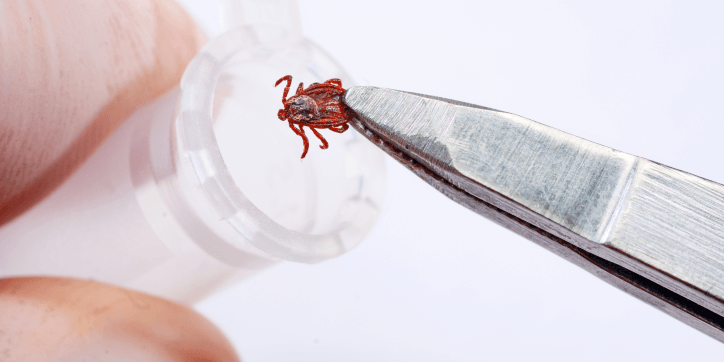
Testing for Lyme Disease
Chronic Lyme is difficult to identify and adequately treat because no definitive diagnostic test exists. Most Lyme disease tests are designed to detect antibodies created as the body responds to the infection. But antibodies can take several weeks to develop, meaning that patients may test negative in the early stages of infection.
Specific immunological markers may reveal reason for concern via blood testing, but these markers also might indicate other types of infections—including other tick-borne diseases, viral, bacterial, or autoimmune diseases—all of which can result in false positive test results.
The most effective way to uncover Lyme is through a solid, thorough history, clinical examination, and a Lyme questionnaire.
Treating Lyme Disease
Traditional treatment for Lyme disease includes antibiotics, antiviral, and antifungal protocols. Treatment is challenging because spirochetes are extremely intelligent. Many bacteria contain plasmids, which are small, circular DNA molecules that can make bacteria resistant to antibiotic treatment. With Lyme, this process becomes heightened. Research has shown that the Lyme disease Borrelia burgdorferi species presents the most complex plasmid structure among known bacteria.
Spirochetes are so smart and fast that they communicate with other spirochetes, telling them to change various factors such as pH or temperature or generate a new plasmid that will ultimately resist the treatment.
When one antibiotic treatment doesn’t work, physicians may try as many as 20-30 different types. Unfortunately, this can perpetuate the resistance and induce long-lasting molecular changes to the body’s microbiome. The immediate physiological effects plague patients daily, such as nausea, vomiting, diarrhea, and constipation. Long-term antibiotic treatment for Lyme disease has been associated with serious, sometimes deadly, complications.
Despite all these efforts, the spirochetes survive. Autopsy evidence reveals that spirochetes keep growing persistently, even after 15 years of antibiotic treatment. Given all the evidence, prescriptions may aid in alleviating some of the accompanying symptoms of Lyme, such as pain, depression, anxiety, and poor sleep, but they simply do not work effectively to eliminate the infection itself.
If Traditional Treatments Don’t Work, What Can Be Done?
Multiple research studies have shown the positive benefits of hyperbaric oxygen therapy (HBOT) in treating Lyme disease and its symptoms. The science behind this approach involves how spirochetes respond when exposed to oxygen: they die.
Individuals living with chronic Lyme disease who have undergone HBOT treatments and the Aviv Medical Program protocols report relief from symptoms like digestive distress, brain fog, joint pain, and overwhelming fatigue. Many have been able to return to the active lifestyle they have been missing for years.
HBOT and the accompanying protocols of the Aviv Medical Program will be increasingly valuable in the coming years. Lyme is projected to become a severe epidemic in the next decade—particularly in the Northeast, upper Midwest, and Northwest.
If you or a loved one suspects chronic Lyme disease is at the root of troubling health issues, contact us to learn more about the Aviv Medical Program and its role in providing relief for Lyme patients.
What is a Hyperbaric Oxygen Chamber and How Does It Work?
Hyperbaric oxygen therapy (HBOT) exists as an effective treatment for specific health conditions, including decompression sickness, serious infections, non-healing wounds, and severe burns. Advancements in HBOT science have also emerged, expanding the potential of HBOT’s impact. Yet, not all HBOT chambers are the same. The mechanisms by which each chamber works serve different purposes. It’s important to understand how these chambers operate and what benefits can be achieved in order to reach your health goals.
Monoplace vs. Multiplace HBOT Chambers
Aviv Clinics uses the world’s most advanced multiplace hyperbaric oxygen therapy chambers.
Two main types of HBOT chambers exist: multiplace and monoplace. Monoplace HBOT chambers also take two forms—hard-sided and soft-sided. Both forms are designed to only accommodate one person at a time.
Soft-sided monoplace chambers, often referred to as bag HBOT chambers, are primarily used “on the go.” These HBOT chambers pressurize to a minimum amount of pressure and deliver only a slightly higher dose of oxygen than what you’re breathing in the natural environment.
Soft-sided HBOT chambers are mostly used for anti-inflammation and workout or game recovery. You’ll often see them in sports medicine clinics. Bag chambers are also used in mountain climbing. If a climber starts to suffer from altitude sickness, being in the bag chamber allows them to return to sea level faster and start recovery as they are airlifted to safety.
The other type of monoplace HBOT chamber is constructed of more rigid materials, such as plexiglass. You’ll typically find these chambers in wound care clinics. They are pressurized to an atmospheric level that is predetermined (and prescribed) by a patient’s physician. Patients breathe 100% oxygen during the entire therapeutic session, a length of time that is factored into the prescription.
Because patients are separated from clinicians during the HBOT treatment in this type of monoplace chamber, it can become problematic if the patient experiences any sort of health event mid-therapy. A depressurization process must take place before the patient can exit the chamber—which takes time. Plus, if a patient happens to be undergoing a seizure, that depressurization cannot commence until the person stops seizing.
While seizure occurrence is rare during a medical HBOT treatment, it can happen—and is more likely in patients who have pre-existing seizure disorders or a history of low blood sugar. A related complication is there’s no way for clinicians to medically assess what’s happening at that very moment and implement medical treatment.
A third disadvantage is that monoplace HBOT chambers hold a heightened risk for fire. It’s crucial that no electronics are allowed in the monoplace chambers to prevent this risk.
Multiplace HBOT chambers treat multiple individuals at the same time. These chambers are commonly used in the diving industry—for example, in commercial diving for underwater construction and maintenance. However, advancements in HBOT science have led to other medical uses around the world.
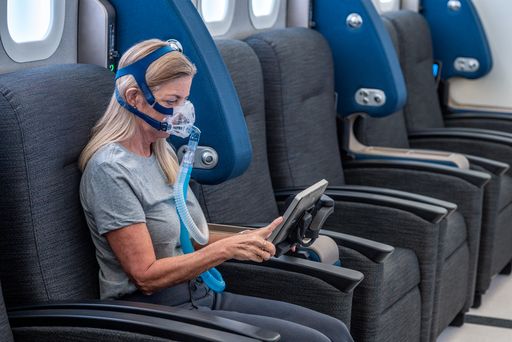
At Aviv you will find multiplace HBOT chambers that are more like suites; a little like flying business class, they are spacious, comfortable, and private. Created in partnership with Fink Engineering, the world’s premier provider of hyperbaric suites, our HBOT chambers are the most technologically advanced, and most importantly, your safety is guaranteed.
In multiplace chambers, individuals are also breathing 100% oxygen in a highly pressurized environment. But, each person has their own breathing apparatus. One distinct advantage of multiple chambers is the ability to have a medical professional in the chamber while individuals are undergoing their HBOT treatment—unlike the monoplace chamber’s limitations.
Ultimately, safety is of utmost importance in HBOT treatment. Most medical HBOT facilities that are run through a hospital or clinic are operating with the proper certifications, whether using monoplace or multiplace chambers. At Aviv Clinics, all physicians, nurses, and hyperbaric technologists undergo in-depth training and have reached certification status. However, it’s important to keep in mind not all facilities meet these stringent safety standards.
Advancements in HBOT Science
Modern hyperbaric oxygen therapy protocols go beyond addressing a specific condition. The science, technology, and unique protocols of the Aviv Medical Program—and the design of the clinic’s multiplace HBOT chambers—work proactively to maximize overall health. In other words, the Aviv Clinics HBOT chambers offer more than just oxygen therapy.
The foundational aspects of HBOT treatment are still in play: The multiplace chamber is pressurized to the optimal level, which takes about 10 minutes. Once the target pressure is reached, individuals begin breathing 100% oxygen for a period of 20 minutes. After 20 minutes, masks are removed for five minutes. Total treatment time of two hours. Four oxygen periods with three 5-minute air breaks in between. This makes it seem as though the treatment is 30 minutes long.
This on/off alternating protocol of oxygen fluctuation tricks the body into thinking it is in low-oxygen distress. The body’s natural reaction to the rapid decline in oxygen levels is the creation of new stem cells. It also triggers something called hypoxia-inducible factor (HIF), which plays a role in angiogenesis, or the creation of new blood vessels.
Both are instrumental in healing and rejuvenating various parts of the body and brain, such as:
- Stroke Recovery
- Traumatic Brain Injury (TBI)
- PTSD
- Lyme Disease
- Fibromyalgia
HBOT and the Aviv Medical Program protocols also contribute to enhanced physical performance, cognitive performance, and overall vitality and quality of life.
The Bottom Line
If you’re considering HBOT to progress your health, it’s imperative to know the advantages and potential limitations of the different types of HBOT chambers—and which chamber will best help you reach your goals.
Contact us if you have any questions about HBOT treatments or would like to explore how the Aviv Medical Program can benefit you or a loved one.

